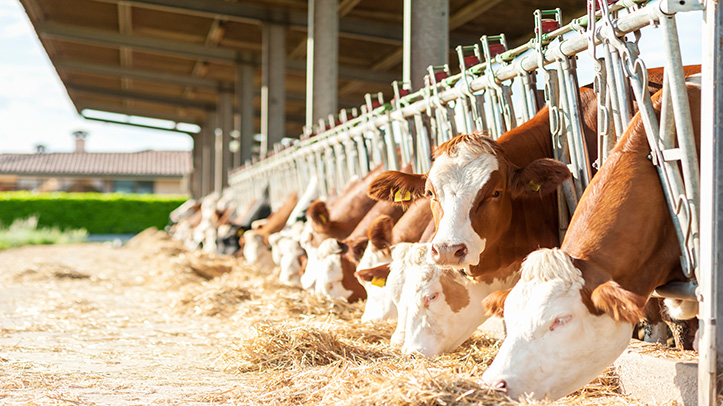Farmers fearing forage shortages because of the recent dry weather could help ease the pressure by feeding a straw or wholecrop-based ration to dry cows and youngstock.
According to Mole Valley Farmers’ senior nutritionist Dr Robin Hawkey, straw and wholecrop are good forage replacers when supplemented with the right protein level.
They can offer a cost-effective solution with straw prices remaining relatively low following a good grain harvest.
Dr Hawkey advises dairy farmers to prioritise quality silage for the milking herd and use straw or wholecrop-based rations for the remaining stock.
He said: “It’s essential to ensure the short-term challenges now don’t cause long-term issues in your herd.
“If you don’t feed your dry cows adequately, this is particularly bad news, as when a dry cow starts to lose weight, they can go into a negative energy balance. In a close-up dry cow, this could predispose her to metabolic diseases when she calves.”
Likewise, feeding an inadequate diet to heifers could limit growth rates, impacting fertility, age at first calving and the overall productivity of the herd.
Dr Hawkeys added: “Straw-based rations need to be carefully balanced in terms of protein, specifically rumen degradable protein, often supplied by compounds and blends including rapeseed and feed grade urea.
“Molassed-based products such as Regumaize and Nutrimaize also contain urea but have the additional benefit of sugar, which helps support energy supply. Adequate mineral and vitamin provision needs to be considered. In particular, checking straw for its mineral content will be crucial for dry cow diets and biotin is recommended for heifers.”


